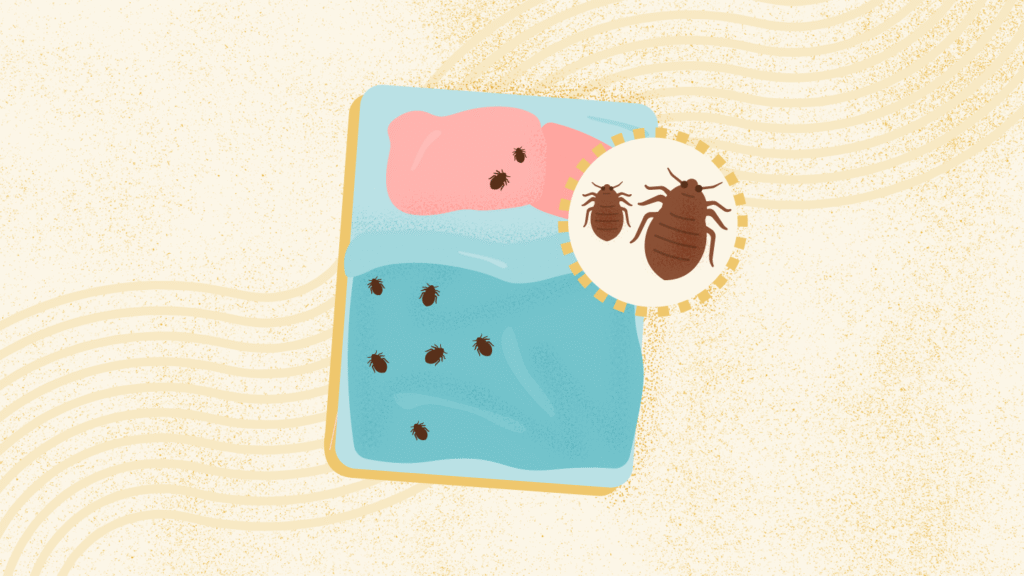Bedbugs are sneaky insects. They bite in the middle of the night (usually about one hour before dawn), injecting an anesthetic and an anticoagulant that makes it painless and unlikely that you’ll feel a thing. After feeding for about five minutes, the bugs will retreat back to their hiding places.
For most people, the first sign of bedbugs is bites on the body. The bites will show up in any place that’s exposed while you sleep, such as the arms, legs, back, and neck.
You could have a single bite, but more often it’s three bites in a row, forming somewhat of a line — what’s colloquially called “breakfast, lunch, and dinner” and is a telltale sign of bedbugs.
Bites can look different from person to person. “In some people, they can cause allergic reactions, although some people don’t react at all,” Lazarus says. In most cases, a bedbug bite looks a lot like a mosquito bite — a red, itchy bump on your skin that appears within 24 hours of your being bitten.
Though the idea of having bedbugs in your home can be troubling, the bugs themselves don’t pose a threat to your health (nor do their bites). (1) “These bites can’t spread disease to humans, but they can be itchy and uncomfortable,” says Steve Durham, president of EnviroCon Termite & Pest in Tomball, Texas.
You likely won’t need to visit a doctor as a result of getting bitten by a bedbug. (6) Usually, the bites will heal within two weeks on their own, though you may want to apply an anti-itch cream or corticosteroid cream to the area to relieve itchiness. (7)
If you experience an allergic reaction or the area shows signs of infection, such as if the area oozes pus, it may be time to visit a dermatologist. He or she will likely prescribe an antihistamine and corticosteroid to treat an allergic reaction, or an antiseptic or antibiotic ointment for an infection.
Learn More About Identifying and Treating Bedbug Bites
Read the full article here

